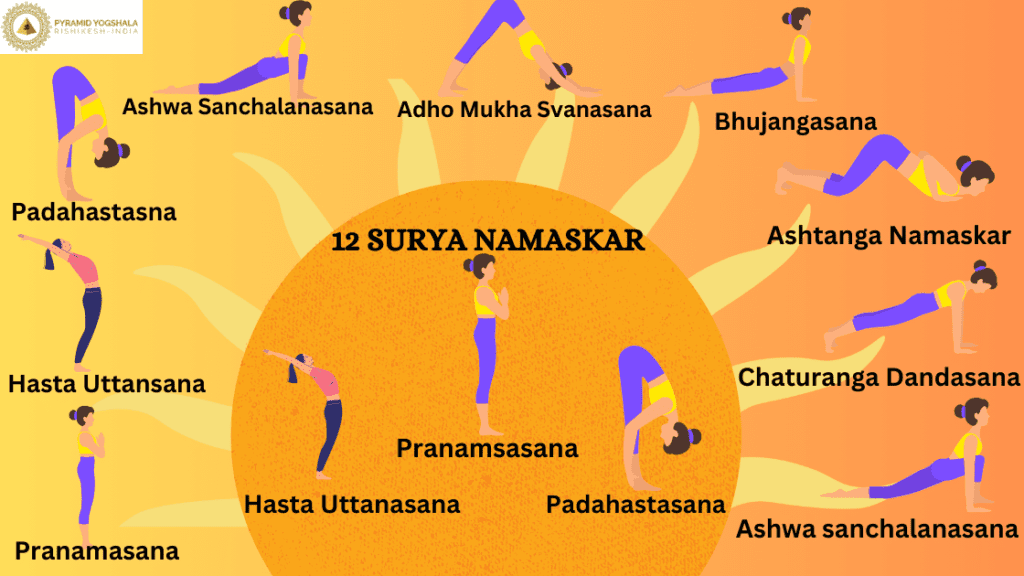
Surya Namaskar or Sun Salutation is a holier yoga pose and it focuses on twelve different poses to be performed in a switch sequence in order to pay respect to the Sun. This ancient practice does not only enhance the physical energy of a person but also the mental and the spiritual. The above sections of Surya Namaskar can be repeated in a more effective way by uttering certain Sanskrit mantras for the particular places of the exercise. Here in this blog we would discuss the 12 different mantras used in Surya Namaskar, help you understand how to perform the 12 Surya Namaskar Mantras poses correctly and the advantages of practicing Surya Namaskar Mantras.
How to do Surya Namaskar & Mantras
Surya Namaskar is usually done in the morning with the face towards the sun but this exercise can be conducted any time from the morning till evening. It is a 12-fold process of depicting 12 different postures and each one of them is chanted with a particular mantra. Here’s a step-by-step guide to performing Surya Namaskar:Here’s a step-by-step guide to performing Surya Namaskar:
1.Pranamasana (Prayer Pose):
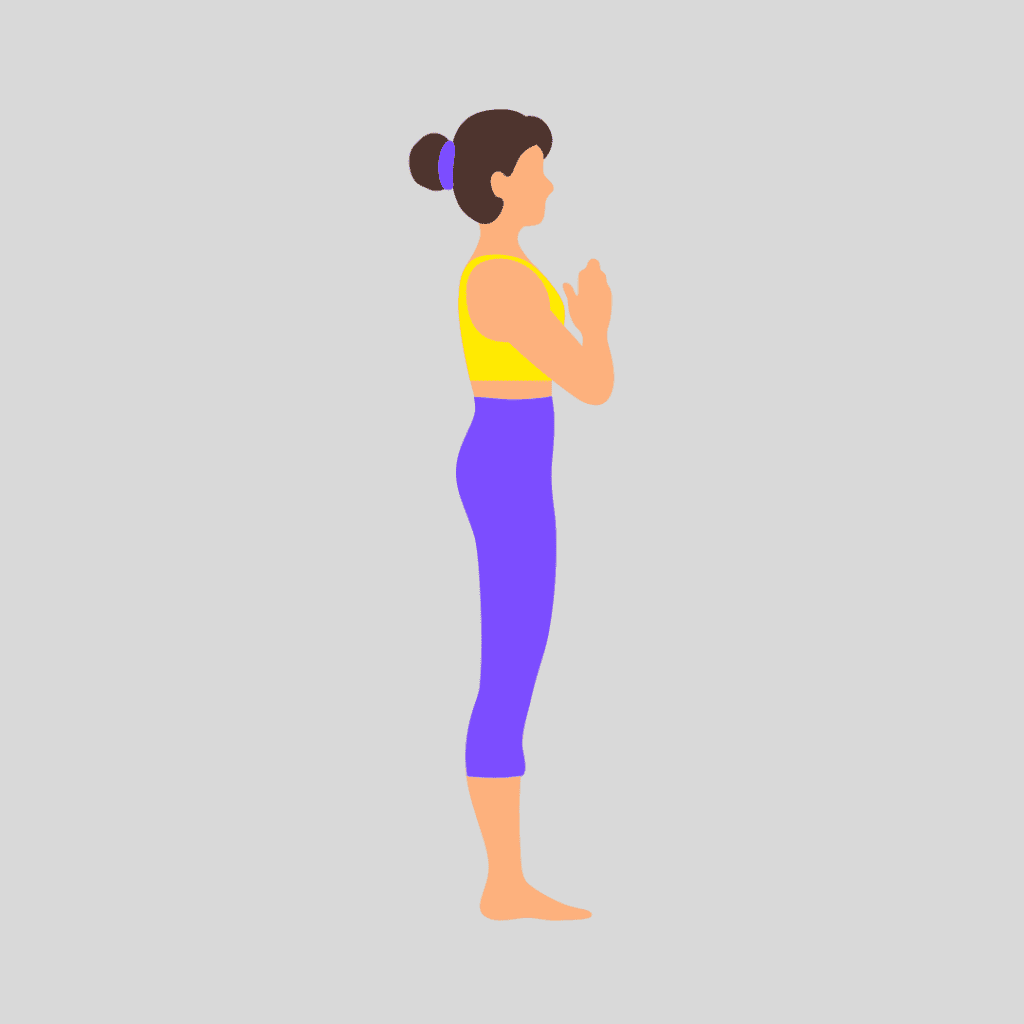
How to Do It: Start with your feet hip-width apart with your arms folded around your chest. Keep your body upright and fixed and stay relaxed and concentrated on your breath.
Mantra: This I consider as the most divine of mantras, as it offers peace to the lover of the universe – “Om Mitraya Namaha” (Salutations to the friend of all).
2.Hasta Uttanasana (Raised Arms Pose):
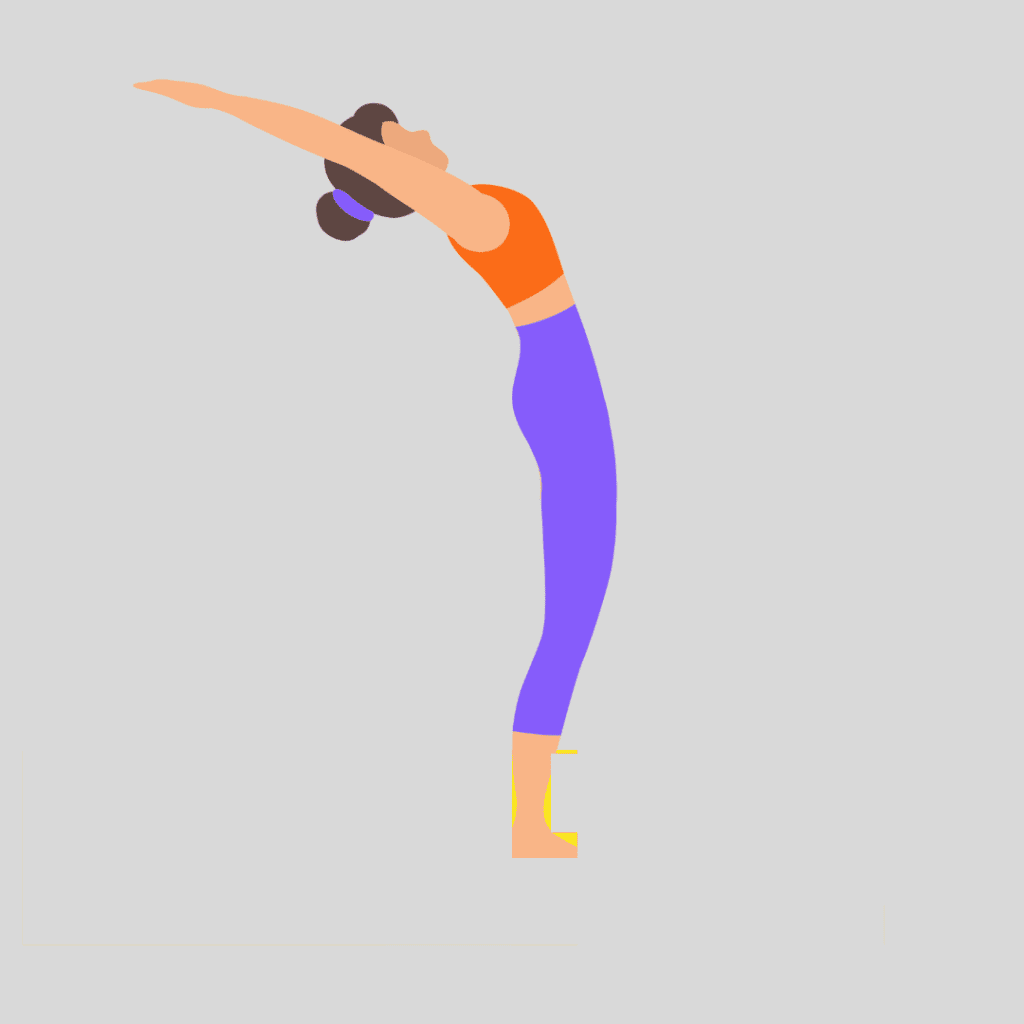
How to Do It: Take a deep breath and lift both your hands above your head; feel a synchronous curve in your back. Raise your head and the rest of your body, as far as possible.
Mantra: This one is called – ‘Om Ravaye Namah’ which means, ‘Salutations to the one who is radiant.’
3.Hasta Padasana (Hand to Foot Pose):
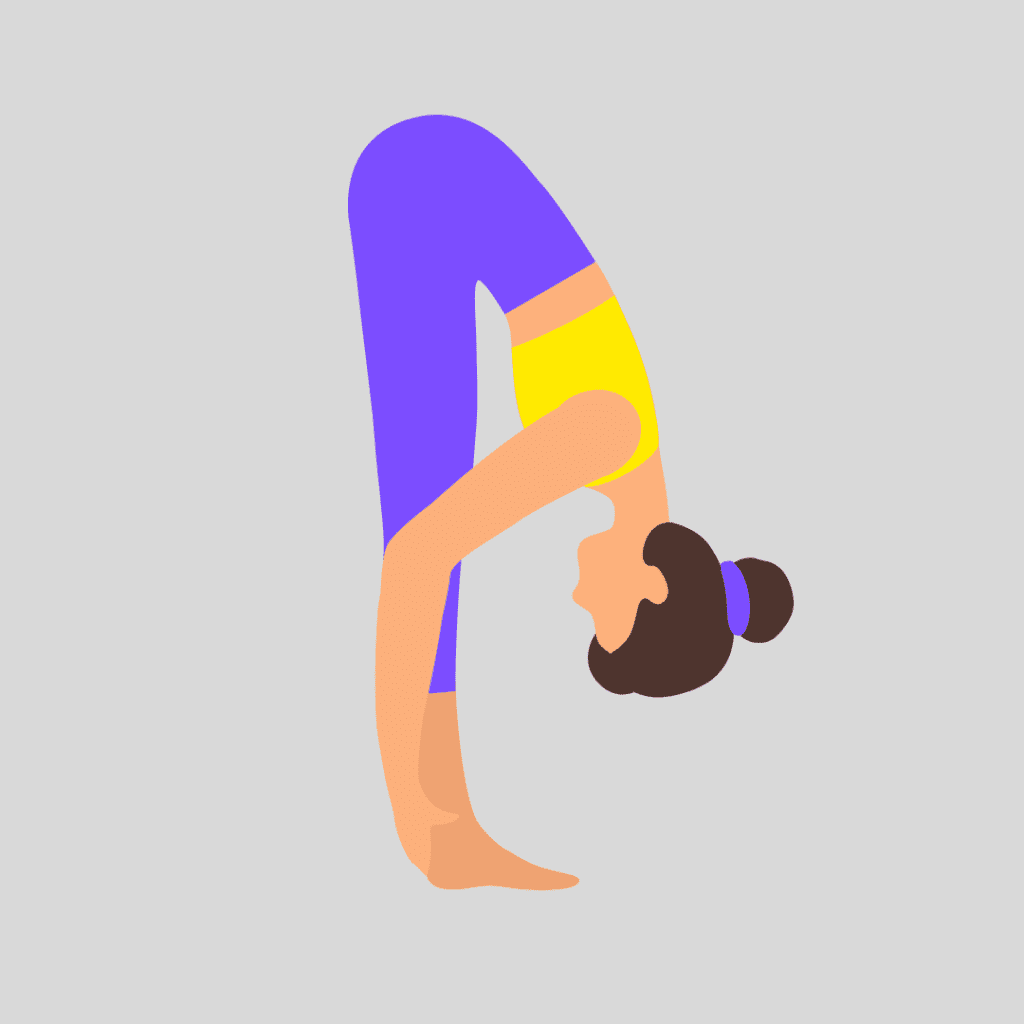
How to Do It: Take a deep breath and use it by exhaling while you bend your body forward at the hips with your hands touching the floor at your feet level. Keep your knees straight.
Mantra: It is again a very auspicious beginning of a day generally chanted in homes across India and by several people worldwide.
4.Ashwa Sanchalanasana (Equestrian Pose):
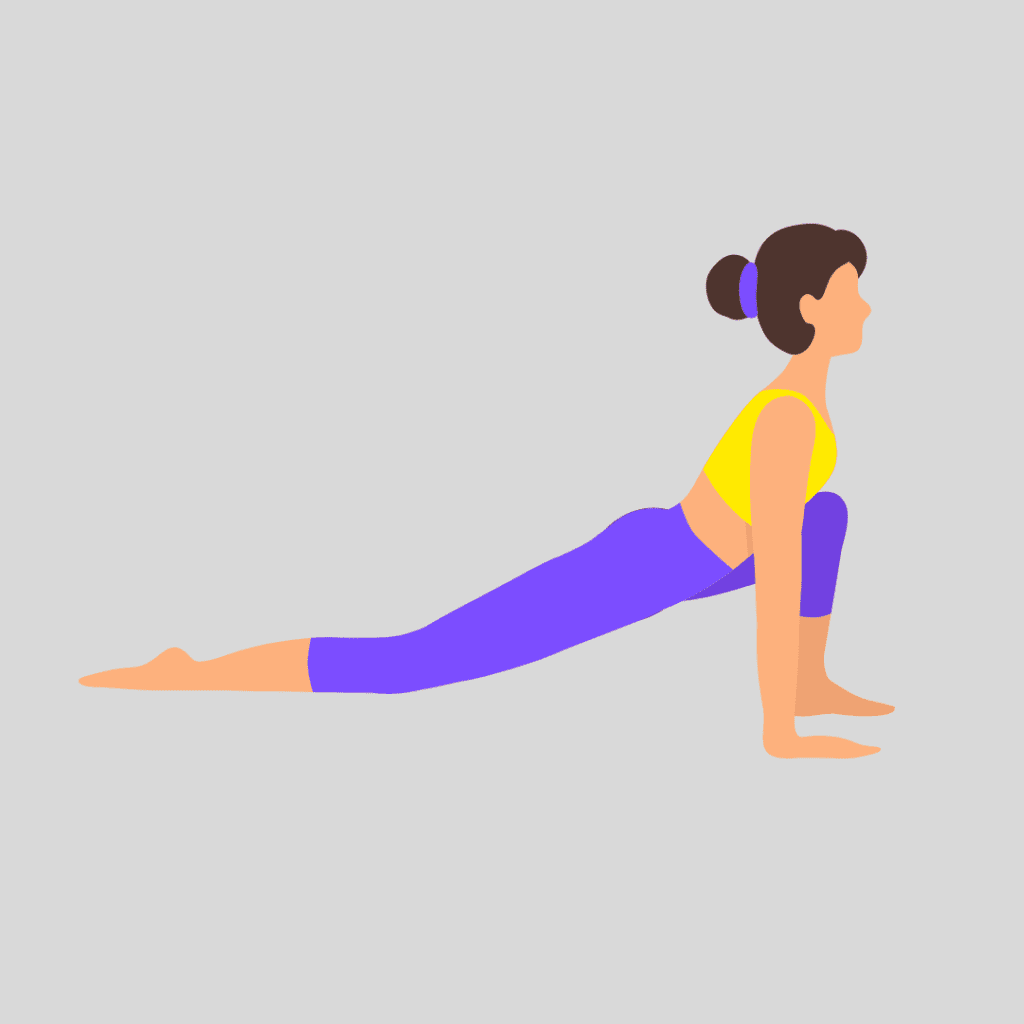
How to Do It: Deep breath and place one foot behind you and put the knee down as well. Lift your head upwards as far as possible keeping your hands flat on the floor.
Mantra: In India, people also use “Om Bhanave Namaha” literally translating to (Salutations to the one who shines).
5.Dandasana (Stick Pose):
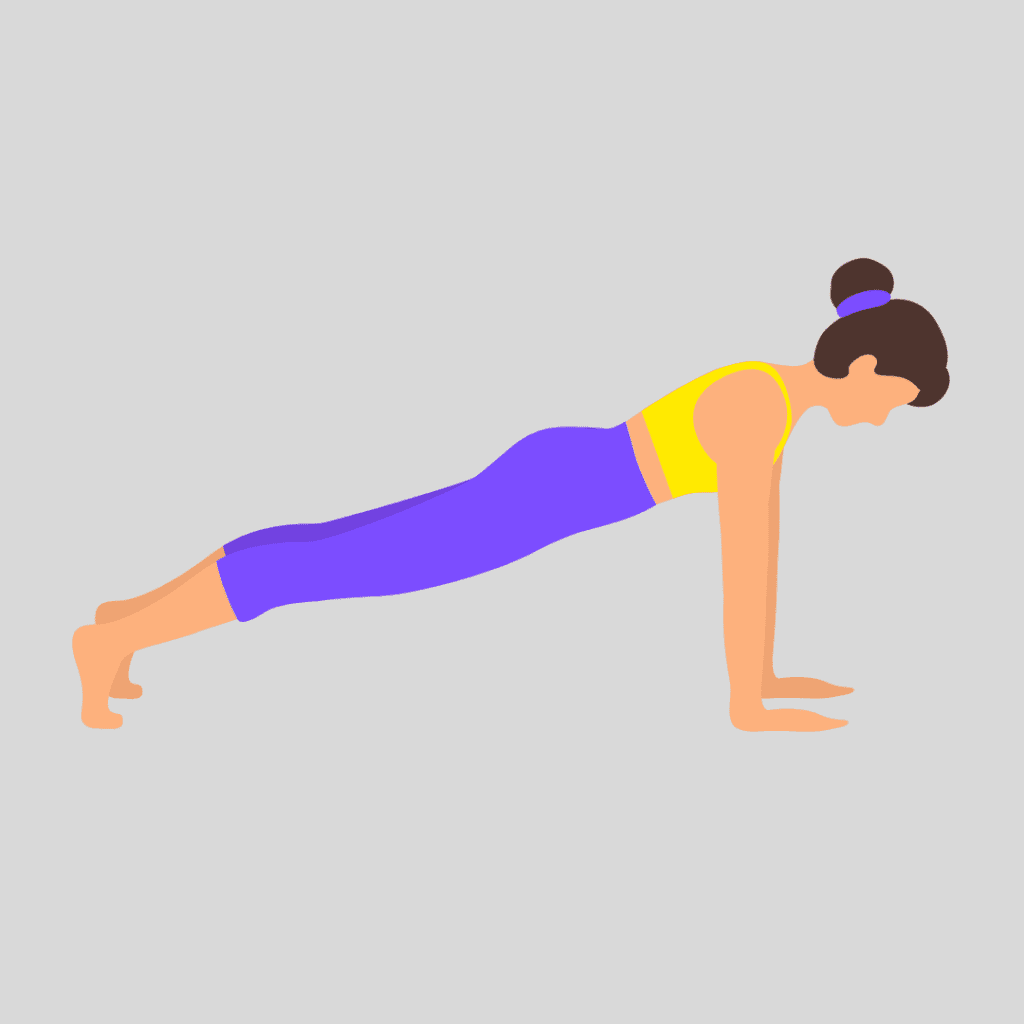
How to Do It: Breathe out and move your other foot back; aligning your body from your head to the heels, similar to a press up position.
Mantra: “Om Khagaya Namah” (This is another way of practicing the art of making prayer and showing respect in the movement of the sky).
6.Ashtanga Namaskara (Salute with Eight Parts Pose):
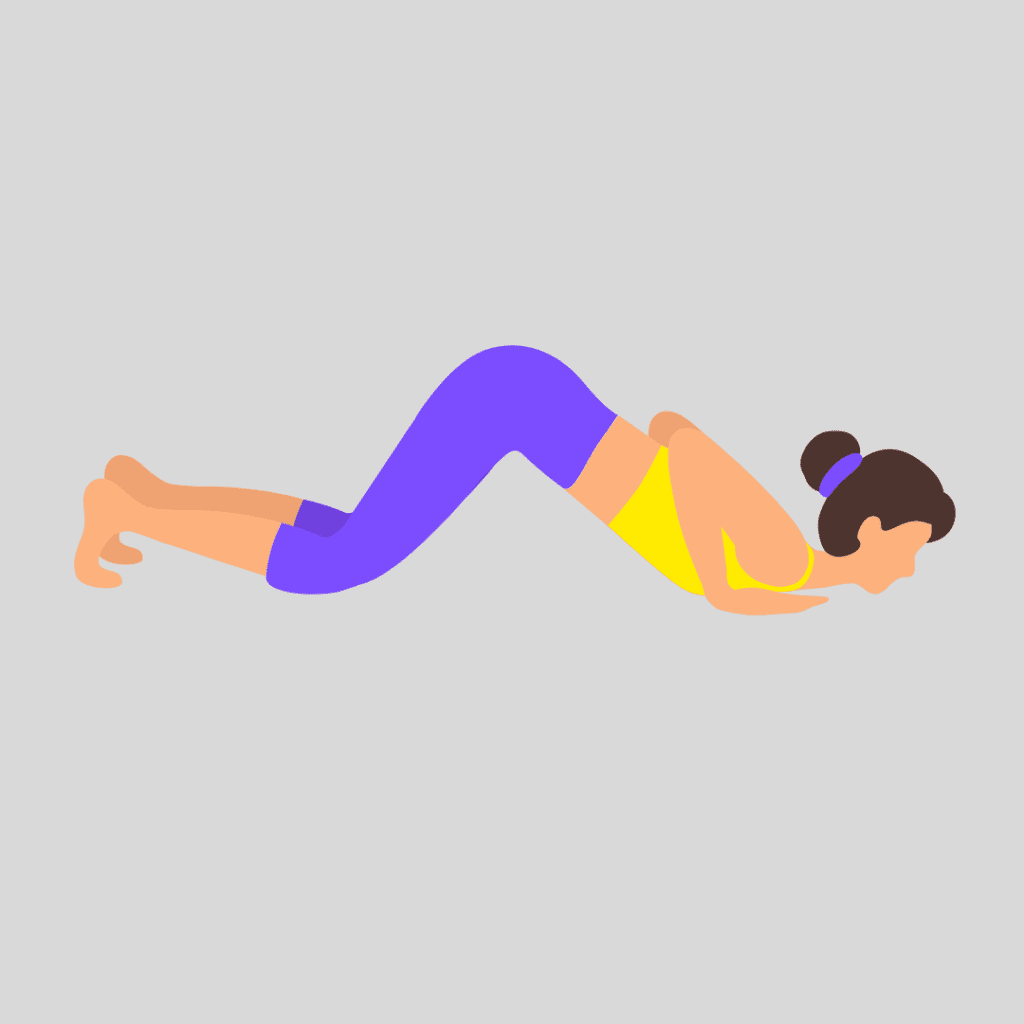
How to Do It: Then lower your knees, chest and chin to the ground but ensure that the hips still lift off the ground. Your body should align in that your legs should form a straight line with the parallel bars.
Mantra: And here I got the name ‘Om Pushne Namah’ which means Salutations to the nourisher.
7.Bhujangasana (Cobra Pose):
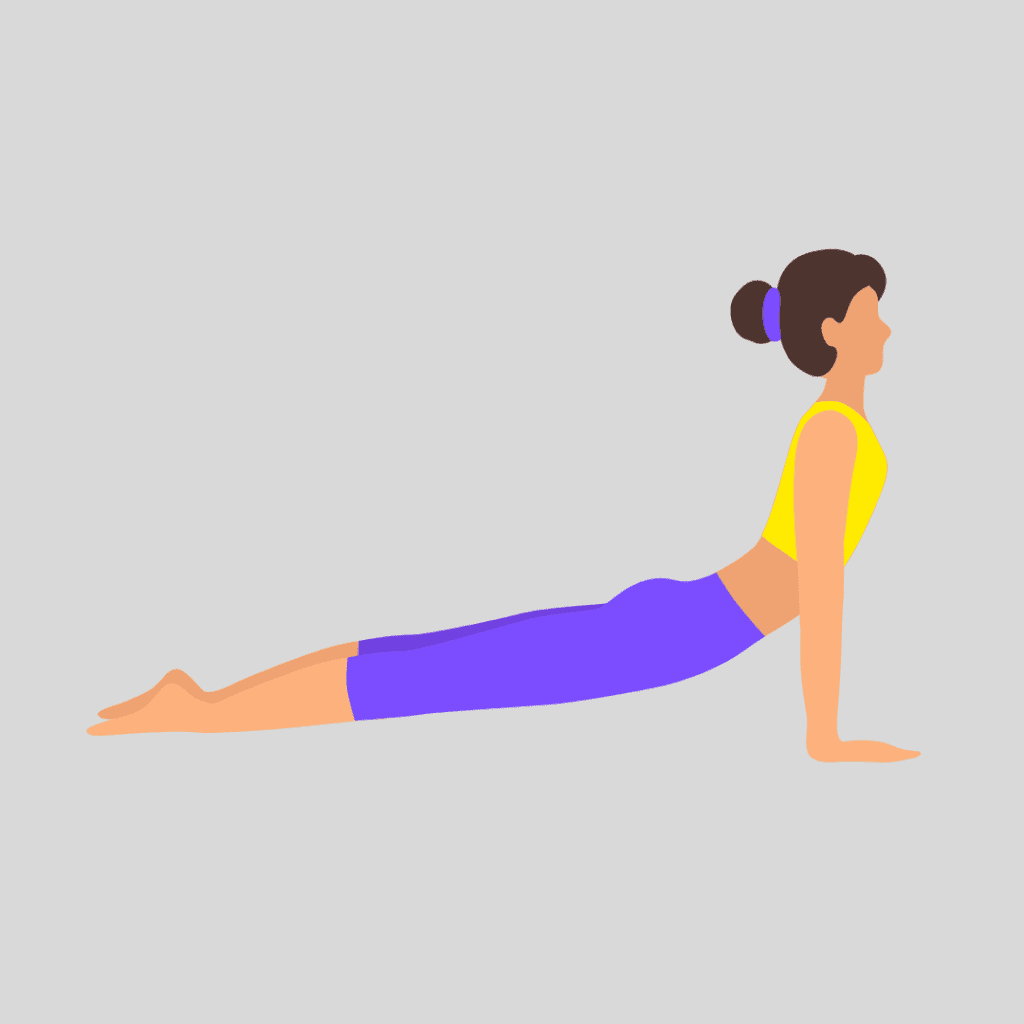
How to Do It: Breathe in deeply while you push your body off the floor with your back muscles ensuring your elbows are rightly bent.
Mantra: “Hiranyagarbha Mantras” (After the golden embryo or womb cycle).
8.Parvatasana (Mountain Pose):
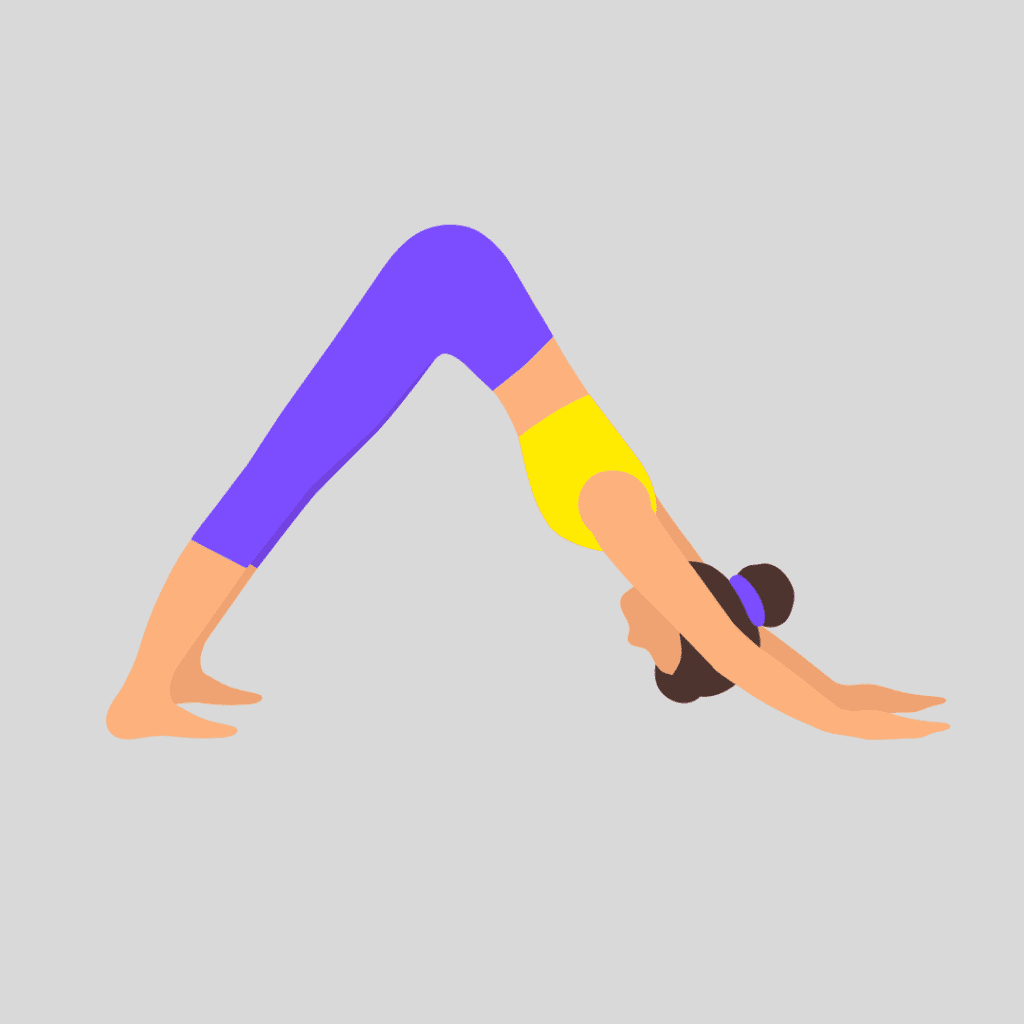
How to Do It: Exhale and at the same time, roll your hips backward so that the body forms the shape of an inverted ‘V’. Push the heel of your feet towards the ground.
Mantra: There are two major methods of invocation one is ‘Om Marichaye Namaha’ which means Salutations to the ray of light.
9.Ashwa Sanchalanasana (Equestrian Pose):
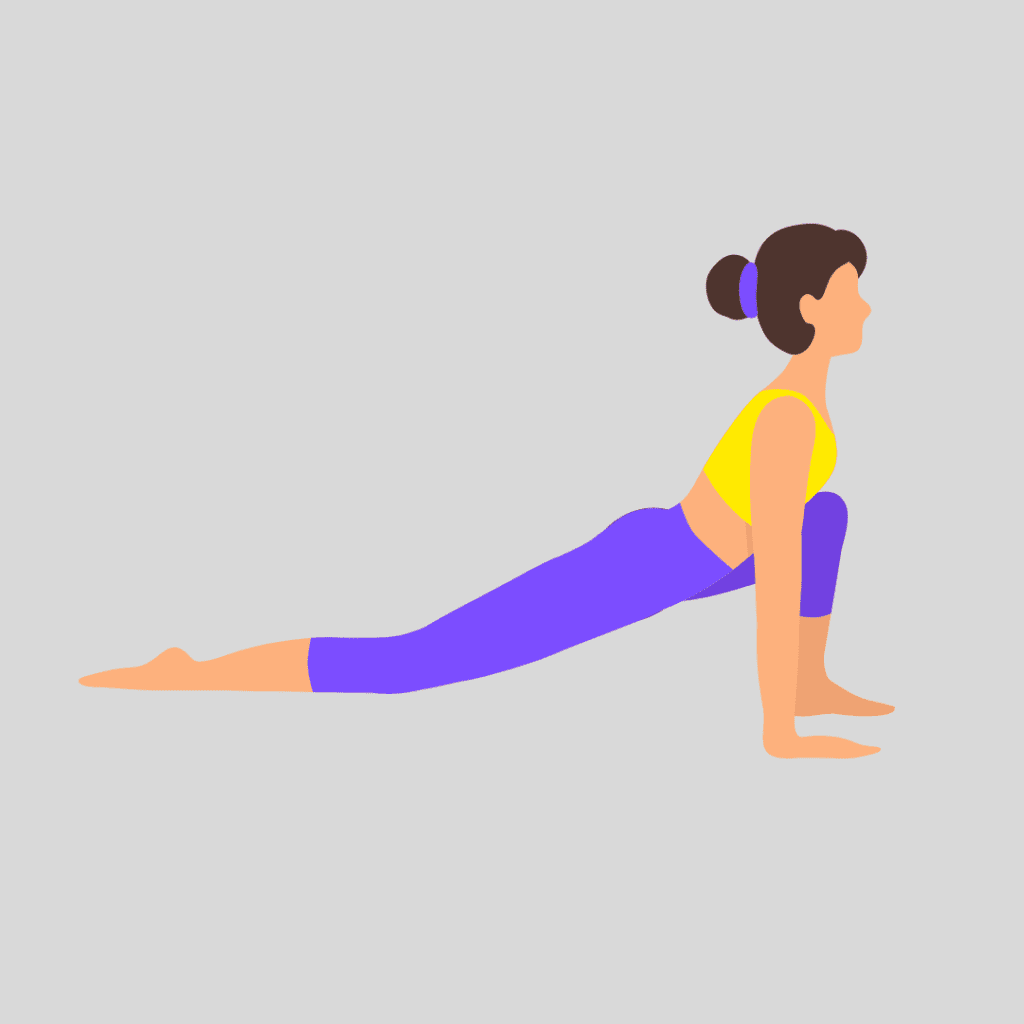
How to Do It: Breathe in and step forward and placing one foot between the hands the other knee also touches the ground. Look up.
Mantra: First line of the mantra is called ‘Om Adityaya Namah’ which translates to ‘Salutations to the son of Aditi’.
10.Hasta Padasana (Hand to Foot Pose)
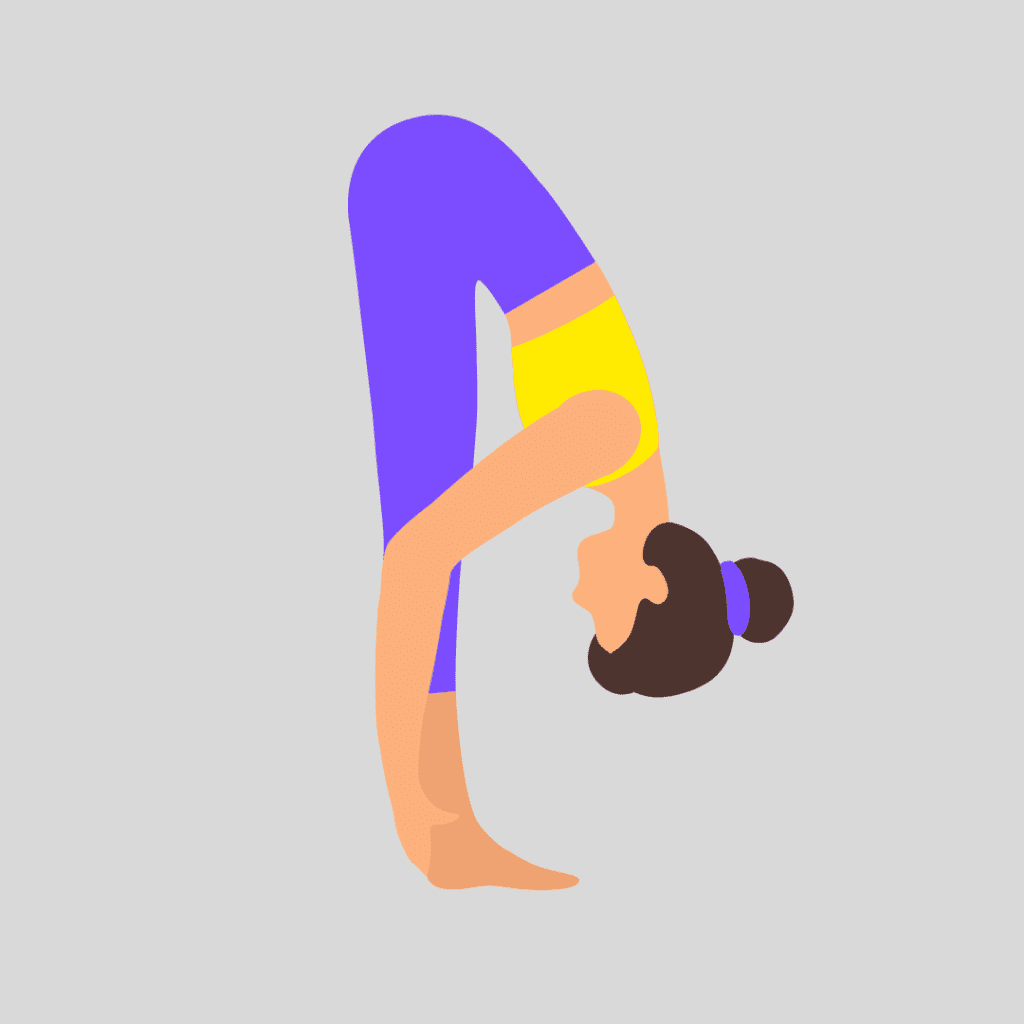
How to Do It: Take the other leg forward and at the same time let the air out of your mouth, place the hands near the feet on the ground as well.
Mantra: I liked the title line, “Om Savitre Namaha” Which literally translates to – Salutations to the creator.
11.Hasta Uttanasana (Raised Arms Pose):

How to Do It: Take a deep breath and lift both of your arms above your head, bend your back a bit to stretch.
Mantra: “Om Arkaya Namaha”- salutations to the one who is the form of the sun.
12.Pranamasana (Prayer Pose):
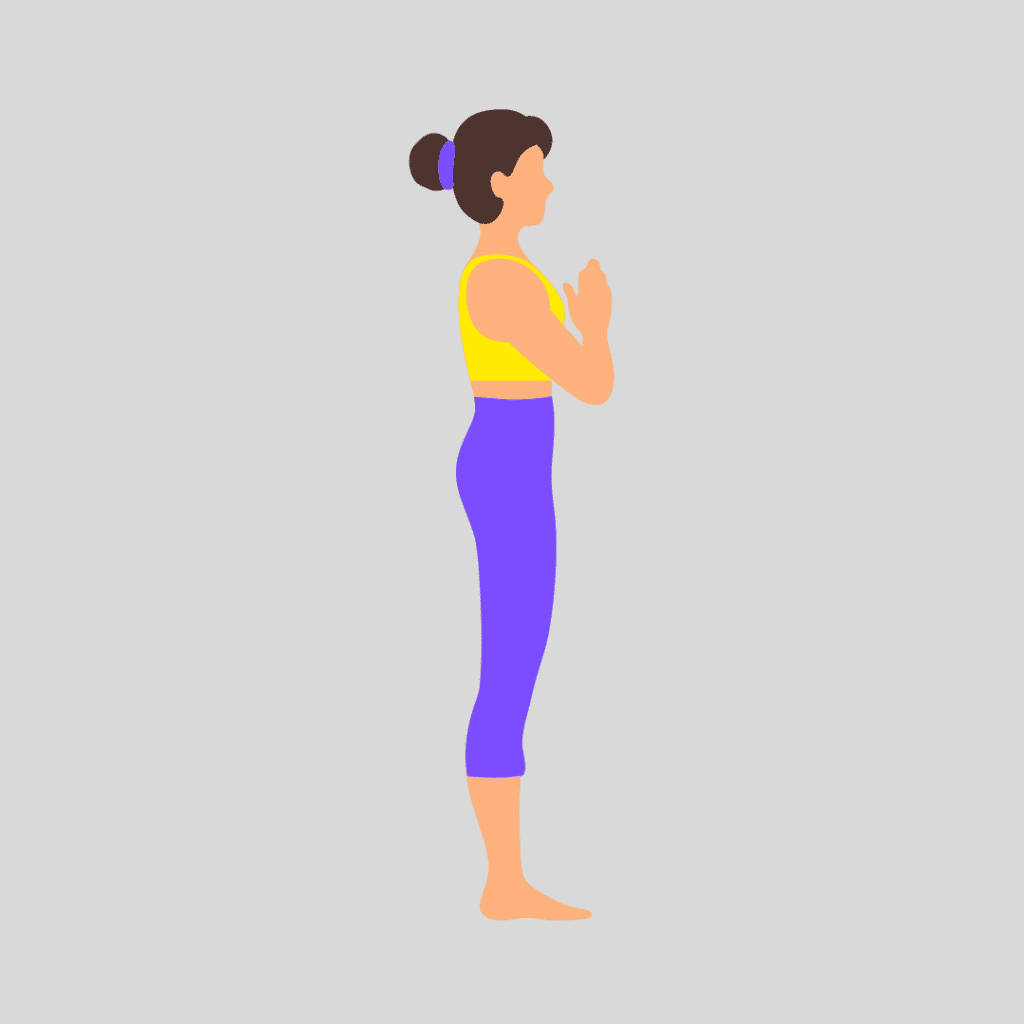
How to Do It: Breathe out, and stand back up with the fingers of both your hands joined in prayer position in front of your body.
Mantra: Bhaskaraya is the first book of Kala-Maharnava that has eight slokas and the message written at the beginning of the book is “Om Bhaskaraya Namah” salutations to the illuminator.
How to Chant the Mantras Correctly
For the purpose of getting most of the Surya Namaskar one has to ensure that he chants the mantras correctly. Here’s how to do it: Here’s how to do it:
a. Focus and Intention
Before you begin, whether it is for the first time, or the tenth time, have an intention for your practice in mind. When taking on or using each of these mantras, do so with respect and Pay per head.
b. Proper Pronunciation
It’s important to accurately pronounce all of the mantras so as to preserve the vibrational purity of the words. It is possible to listen to a recording or ask a knowledgeable teacher for help.
c. Timing
Recite the mantras with the breath and the dance moves. All the mantras should chant at the time of the asana, according to the physical movements of the body.
d. Mental Alignment
Try to imagine what those qualities are or the God or goddess related to that mantra. This adds more to the meditation process of the practice.
Benefits of Surya Namaskar
Surya Namaskar offers a multitude of benefits for the body, mind, and spirit:Surya Namaskar offers a multitude of benefits for the body, mind, and spirit:
1.Physical Benefits
Improved Flexibility: The sequence comprises a number of movements that enhance flexibility of the muscles and articulations.
Enhanced Strength: They help in building strength of value muscles in stimulating the core, arms, legs and back muscles.
Boosted Circulation: The pattern involved in the sequence is beneficial in improving the circulation of blood in the body and the health of the heart.
2.Mental Benefits:
Stress Relief: The breathing and movement that requirs helps lessen tension and promote good well-being.
Mental Clarity: The practice focuses on an individual’s concentration. Mindful attention to an object of one’s choice thus improves the individual’s mental focus.
3.Spiritual Benefits:
Inner Harmony: Chanting mantras while performing Surya Namaskar helps cultivate inner peace and spiritual connection.
Energy Flow: The practice helps to balance the body’s energy centers also referred to as chakras and raises the general energy level.
Conclusion:
In conclusion, Surya Namaskar could say to be not only physical exercise that is very effective in improving one’s health but alsomental exercise that enhances one’s concentration and yoga that brings spiritual advancement. Incorporating the 12 mantras to the practice, it not only pays respect to the sun, it also brought additional benefits to such a sequence. Practice brings a sense of order in the life of a person and, thus, makes the practice of both physical and spiritual values possible.


